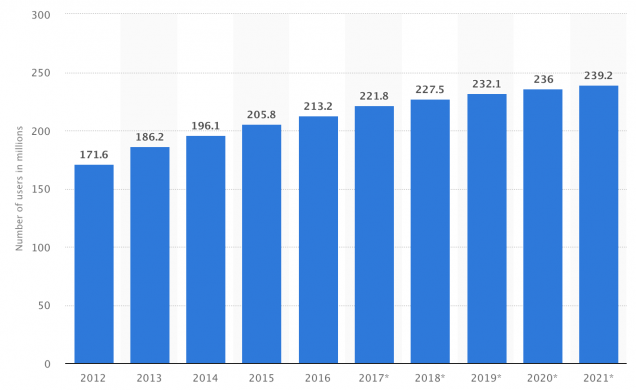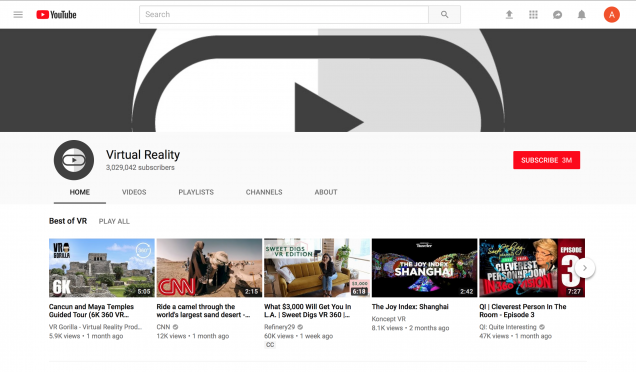Growing up, millennials were usually proud to say that we were the generation witnessed the birth of internet. Not so long ago during our early teenage years, I recall me and my family cuddled in the sofa in our living room, waiting for time ticking to our favorite show playing on the television; or every night when I was in elementary school, I would turn on the radio on time at 9PM to enjoy my favorite radio talk show.
“The biggest growth area in Internet usage has been video streaming”, stated by West (2014) in his study of video streaming and digital content delivery. It was estimated that video streaming takes up to 30 percent of the Internet use (West, 2014). The evolution of online streaming channels such as Netflix, Hulu and Amazon, fortunately yet sadly, took those memories from me, when the family would never get together every evening for some TV shows, or I would never have that excitement while waiting for my favorite radio talk show every night. As of 2018, according to Statista, the number of online video viewers in the United States has reached 220 million. The ability of online video streaming to go beyond time and space eliminate the limit of traditional streaming media. In my view, the invention and expansion of online video streaming was certainly revolutionary when the public was shifting from using traditional media for entertainment to living with new media and technology. The use of smart phones undoubtedly increased the convenience of using online-streaming and its related features, as stated by Katz (2007), that “Public space and behavior has been altered by the arrival of mobile media”.

Not only our lifestyles and social behaviors were altered, that we don’t need to be restricted by time and location to browse shows and movies, but also people themselves can be creators. Unlike websites that are content-based, online video channels like YouTube or social media applications like Snapchat give users a more efficient way for self-expression as well. In a research study about youth self-expression on YouTube by Caron et al (2017), the reviews showed that “New media technologies provide young people with opportunities for participation and interaction in ways that were not previously available to them (Boyd, 2014), including producing their own content for potentially large and responsive audiences (Lange and Ito, 2010; Middlaugh, 2012)”.
As stated above, the explosion of use of online video streaming can be considered as a revolution in new media era, nevertheless, in my view, not revolutionary enough when put in the present day. Now with the widespread of online video streaming service, watching videos online is deeply rooted into our daily life. According to Digiday, 72% of the population in the United States has at least one subscription video-on-demand services subscription such as Netflix in 2018. Especially for the Generation Z that was born after the Internet was taking charge of the society, watching their favorite TV shows online was never a novelty to them. To move along with the current video streaming technology, it was announced by International Telecommunication Union in 2013 that “the ratification of H.265 which promises to bring 40-45% increase in compression efficiency (or bandwidth reduction) compared to existing H.264 technology”. The technology of video streaming is something that we can easily handle nowadays, but the adventure for seeking out higher quality of videos is always a non-stop to high-tech companies. Recent years, the development of virtual reality is also a fresh cake that every tech institute wishes to have a slice from. For instance, starting from 2015, YouTube has built up its own official channel called Virtual Reality to post videos that give users VR experience. The evolution of VR headset, I believe, will certainly bring us more freshness into our video streaming experience.

There is no doubt that online video/audio streaming is gradually taking place the existence of television and radio, and saves the trouble for people to sit on the couch and wait for the time of their favorite shows to come. If asked when was the last time I shared a TV show with my family during dinner time on television, it would take me a while to answer. To me, that is the reason why scholars and the public concern about new technology invading too much into our life.
Reference
Katz, J. E. (2007). Mobile Media and Communication: Some Important Questions. Communication Monographs, 74(3), 389-394. doi:10.1080/03637750701543519
West, D. M. (2014). The Evolution of Video Streaming and Digital Content Delivery. Center for Technology Innovation at Brookings.
Caron, C., Raby, R., Mitchell, C., Théwissen-Leblanc, S., & Prioletta, J. (2016). From concept to data: Sleuthing social change-oriented youth voices on YouTube. Journal of Youth Studies, 20(1), 47-62. doi:10.1080/13676261.2016.1184242
Southern, L., Weiss, M., Patel, S., Davies, J., Peterson, T., & Willens, M. (2018, February 15). The evolution of streaming video services, in 4 charts. Retrieved from https://digiday.com/media/evolution-streaming-video-services-4-charts/
Zambelli, A. (2013, March 01). A history of media streaming and the future of connected TV. Retrieved from https://www.theguardian.com/media-network/media-network-blog/2013/mar/01/history-streaming-future-connected-tv